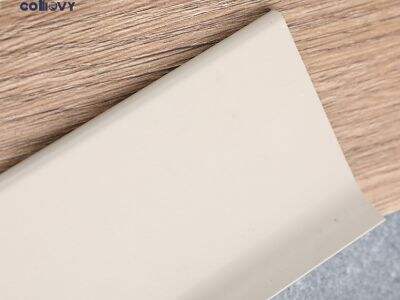Finally, skirting boards are not just aesthetically pleasing; they also provide several practical benefits to homeowners. They also prevent damage to the walls and make a room appear nice. We will review these types to give you a better choice of the best skirting board for your home.
Types of Skirting Boards
MDF Skirting Boards:
MDF skirting boards are constructed using a type of engineered wood known as medium-density fiberboard. They are inexpensive, simple to install and available in scores of designs. Kamowei MDF high skirting board are known for their strength and ability to be molded into different shapes, making them popular in modern households.
Wooden Skirting Boards:
Skirting boards made of wood are a flooring classic and suit any home. They’re made from various woods including oak, pine or walnut, each with its own aesthetic. Skirting boards made of wood can help create warmth and style in any given room.
Plastic Skirting Boards:
What are the benefits of installing plastic skirting boards? They come in tons of colors and designs, so finding one that matches your house is no problem. Plastic board skirting are also suitable for moisture-laden environments like bathrooms and kitchens as they’re moisture resistant.
Skirting Board Style: How to Choose the Right One?
Consider the style of the room when choosing a skirting board for your home. Wood skirting boards are a great choice if you want something modern and simple; go for sleek and basic-looking boards. For those who prefer a more traditional approach, go for skirting boards with decorative designs.
The Best Materials for Skirting Boards: Pros and Cons
There are pros and cons to each type of skirting board. Here are some questions to consider:
MDF Skirting Boards:
What we like: Affordable, simple to install, versatile
Cons: Susceptible to water damage and hard impacts
Wooden Skirting Boards:
The Best Ways to Protect Your Floors from Water Damage
Pros: More expensive, but could require routine upkeep
Plastic Skirting Boards:
Pros: Budget-friendly, moisture-resistant, easy to clean
Pros: Often cheaper, can be easier to install, easier to maintain, will match with wood furniture and decorCons: Less colors and designs, less nice than wooden skirting boards
How to match the skirting board profiles in your home?
Both the designs and shapes of the skirting boards are referred to as skirting board profiles. From simple to fancy, there are many profiles. When picking a profile, consider the style of your home. If your home is contemporary and minimalist, then a slim skirting board profile works well. A profile with elaborate designs will be great if your home is more traditional.
How to Choose the Best Skirting Board for You?
Consider the style of your home and choose a skirting that complements it.
Think about the material and how durable the skirting board needs to be, particularly in high-traffic areas.
Evaluate price against quality to gain the most value for your money.
Get some expert advice on picking the perfect skirting board for you.
Ultimately though, skirting boards are an essential aspect of home decor, which can bring a room to completion. By understanding the types of skirting boards and considering the style, material, and cost, you can be assured you will find the right skirting board for your home. If you prefer a modern or a more classical look, there is a skirting that will suit your taste.




